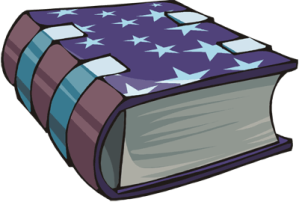 The Secret Life of Words by Henry Hitchings
The Secret Life of Words by Henry Hitchings
There are many ways to write human history. Most writers of history books tend to go the traditional way – following kings and queens, wars, revolutions and invasions. The history of the world is almost always written in military or political terms, and while that’s certainly a valid way to do it, it’s a little overdone. A truly creative historian might try to look at the progress of humankind through a different lens – the history of art, perhaps, or literature or science.
Hitchings has decided to look at history through the rise and spread of the English language – once an agglomeration of angry noises from a few small tribes in what would eventually become Europe, now a tongue that dominates the world. The English language is used by billions, studied by millions more. It’s the language of business, commerce, politics, law, entertainment and news, and has spread like no other language before it.
The big question then becomes, How did this happen? How did English become what it has become? What is the history that led it to span the globe, and what qualities does it have that other languages don’t? In this book, Hitchings looks at the history of English – and by extension the Western world – through the growth of its vocabulary. Where did our words come from, and what does their journey into English tell us about our own history?A modern English speaker, equipped with a time machine, could probably go back about four or five hundred years and still be confident that she would be able to converse with people. Maybe not with perfect clarity, and it would be an entertaining thing to watch, but it would certainly be possible. Before that, the conventions and lexis that we are all so familiar with will start to be more and more scarce, and by the time of Chaucer, our time traveler would have a hard time indeed. So, as far as languages go, modern English is a fairly young tongue. Over the last half-millennium or so, the sheer number of words available to English speakers has exploded, mainly due to what some would call the language’s “whorish” qualities – English will take up with any other language that comes along, accepting its words and making them its own. By following the spread of English, and the changes that it has made, we can see how people and cultures intermingled in the last thousand years or so.
Hitchings begins at, more or less, the beginning, with the Anglo-Saxon roots of English and its almost immediate conflicts with Norman French and the languages of the invading and pillaging Norsemen. He follows the political swings of English, as the rulers of the British Isles alternatingly embrace and shun the language, until it finally becomes the tongue that defines that tiny island on the edge of the North Atlantic. He looks into Arabic and Latin, Japanese and the languages of the Native Americans. We see the wellsprings of the language of food and music, science, military and law. He introduces us to words that came into English through long and winding roads (one of my favorites is Alcatraz – from the Spanish word for “pelican,” which in turn comes from Arabic’s al-qadus for “machine for drawing water,” which is turn comes from Greek’s kados, meaning “jar” – quite a journey for such a miserable place.) The history of the English language is a fractal history, meaning that in order to understand it you also have to understand the histories of a dozen other languages and then the languages that came before them. To try and put it all down on paper is a monumental task indeed.The study of English words is fascinating, though. I have recently become enamored of the “Way With Words” podcast, which dedicates itself to unraveling questions about English usage. The hosts are funny and engaging, and manage to give a brief history of words and phrases and all the little tics of English that make you annoyed enough to have to call a radio show about it. It’s a pleasure to listen to, which is probably why I listened to that show a whole lot more than I read this book.
Mr. Hitchings has done an admirable job with this book, trying to cover all the different avenues by which words came into English. The paths that they followed are fascinating, and the stories behind them are the stories of Western culture and civilization. The trouble is that Hitchings doesn’t do all that good a job in making it interesting to the lay reader, i.e. me.By and large, each chapter deals with a different source of vocabulary or a different time in history, but the narrative that he sets up tends to… wander about. There’s no real narrative to focus on, and while I know this isn’t supposed to be one, Hitchings is trying to tell us a story. It’s a long and complicated one, but it’s still a story, and as such needs to flow in order to keep the reader’s attention.
I can’t fault him for his research or his dedication, but I think he could have given more thought to the organization of the book. Instead of trying to cover as many sources as possible, perhaps he could have narrowed his focus. Instead of throwing out a dozen or so words at a time, he could have given us an in-depth narrative on just a few. Each chapter could probably have been expanded into its own book on the Arabic/Spanish/Latin/German/Greek/African origins of words, and so in reading it you get the feeling that there’s so much more that he’s glossing over. By trying to follow all the twisted paths of the history of English, it’s very easy for the reader to get lost.
All I kept thinking as I read this was that I had much more fun reading Bill Bryson’s book, Mother Tongue, which covers the same topic but is much more enjoyable to read, and perhaps that was my mistake. By the time I got to the end, and was more or less just scanning pages so that I could legitimately say I’d finished it, I realized that this is not the kind of book that you settle down with and read all the way through. It’s a piecemeal book – pick it up, read a chapter, put it down and leave it alone for a while. When you’re in the mood for more language history, pick it up again and read another chapter. Give yourself time to mull it over and digest, and finish it when you finish it.However you decide to get through it, you will certainly have a greater appreciation for the richness and diversity of the English language, so regardless of how interesting it was narrative-wise, Hitchings has achieved his goal. English is an amazing language, and it behooves all its speakers to learn a little bit more about the amazing confluence of cultures that produced the sounds that you speak every day.
—————————————————–
“A new word is a solution to a problem. It answers a need – intellectual, experiential. Often the need is obvious, but sometimes it is unseen or barely felt, and then it is only in finding something to plug the gap that we actually realize the gap was there in the first place.”
– Henry Hitchings, The Secret Life of Words
—————————————————–







































